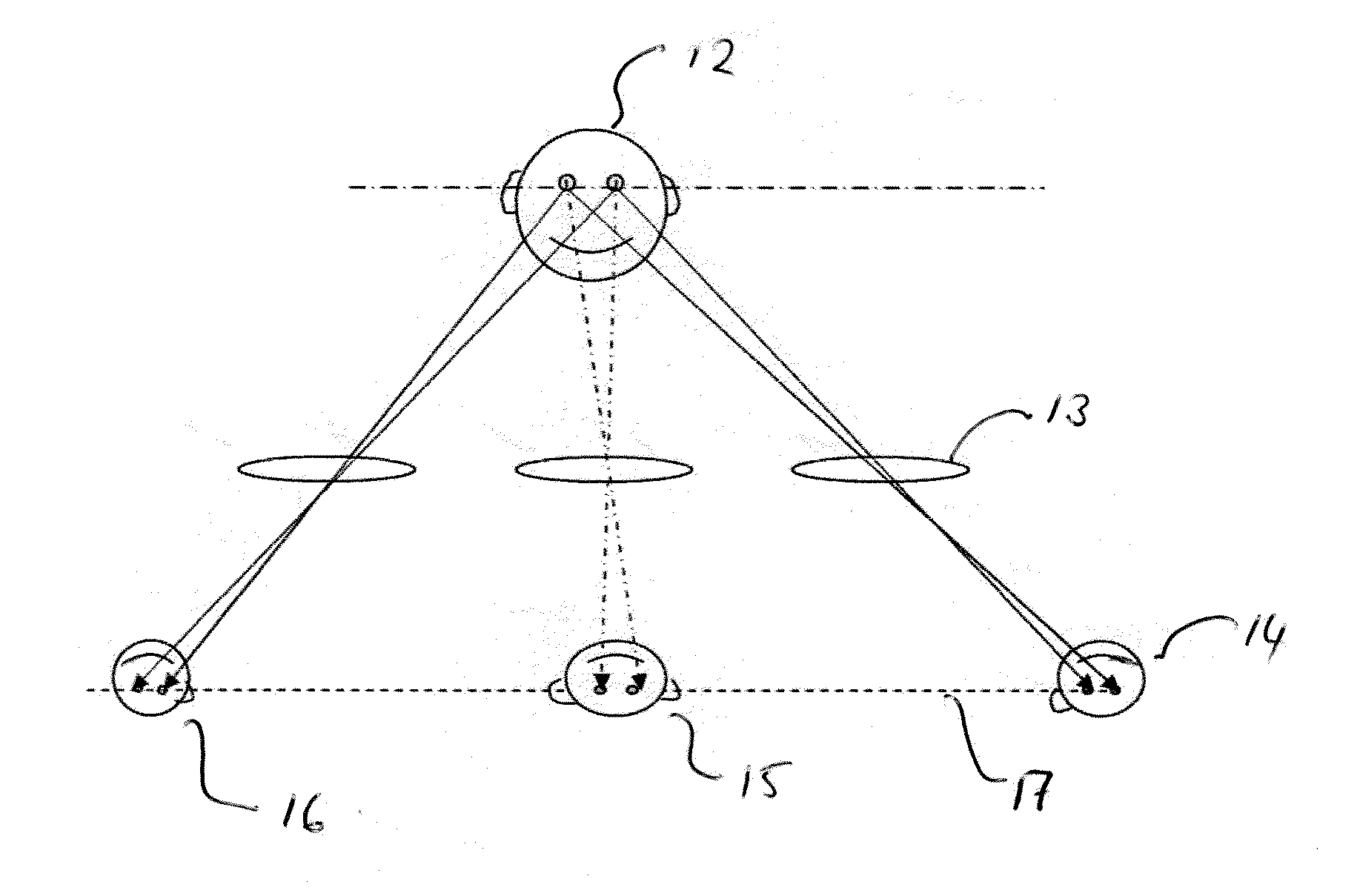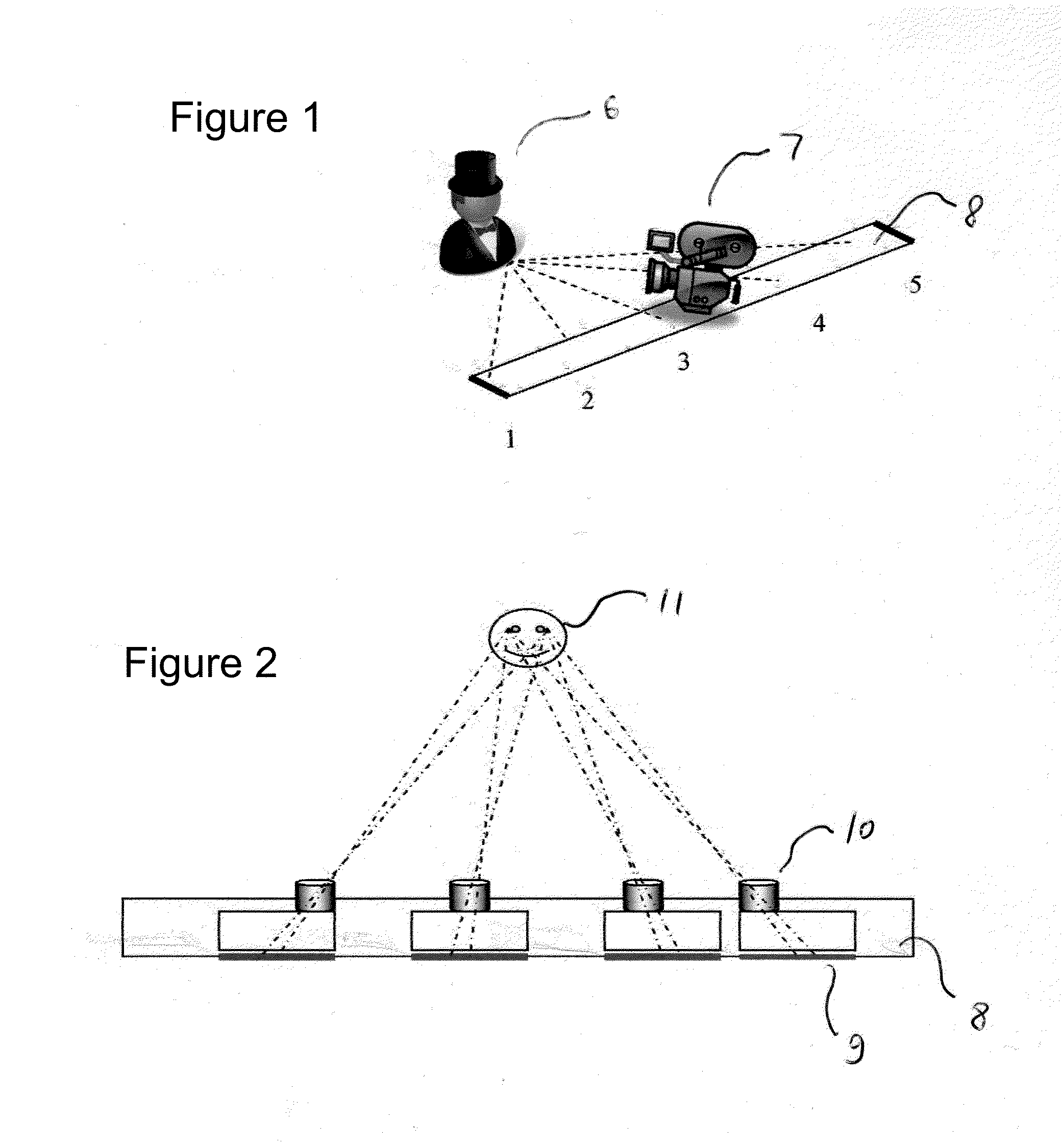Holograms and fabrication processes
- Summary
- Abstract
- Description
- Claims
- Application Information
AI Technical Summary
Benefits of technology
Problems solved by technology
Method used
Image
Examples
Embodiment Construction
[0044]Broadly speaking we will describe a method by which a security device can be produced which has advantageous viewing qualities which can be perceived by inexperienced observers even when viewed in lighting conditions which fall short of the ideal “distant point source” which provide optimum image reconstruction in holography. It also has special manufacturing conditions which provide features which are especially useful as a guarantee of authenticity of a document produced by the method.
[0045]The present technique can provide an image which is easily appreciated by persons who are not skilled in the handling and viewing of holograms, and such an improvement in the perception of a security image has excellent implications for the value of the integral device as a security system.
[0046]One means of producing a holographic stereogram involves the use of a camera which moves along a track in such a way as to record a range of views of the subject matter such that the sequence of f...
PUM
 Login to View More
Login to View More Abstract
Description
Claims
Application Information
 Login to View More
Login to View More - R&D
- Intellectual Property
- Life Sciences
- Materials
- Tech Scout
- Unparalleled Data Quality
- Higher Quality Content
- 60% Fewer Hallucinations
Browse by: Latest US Patents, China's latest patents, Technical Efficacy Thesaurus, Application Domain, Technology Topic, Popular Technical Reports.
© 2025 PatSnap. All rights reserved.Legal|Privacy policy|Modern Slavery Act Transparency Statement|Sitemap|About US| Contact US: help@patsnap.com



